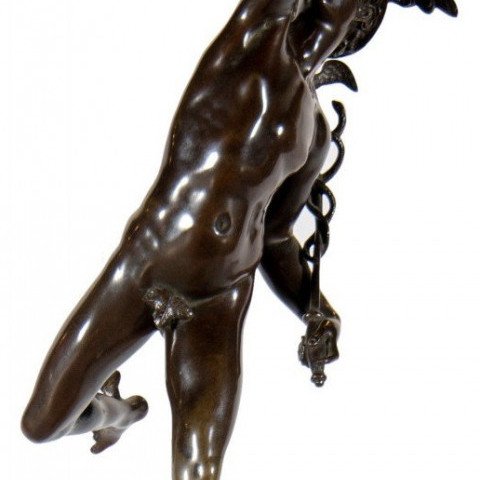Giambologna (known also as Jean de Boulogne and Giovanni da Bologna) — was a Flemish sculptor based in Italy, celebrated for his marble and bronze statuary in a late Renaissance or Mannerist style.
Jean de Boulogne was born in Douai, Flanders (now in France), in 1529. After youthful studies in Antwerp with the architect-sculptor Jacques du Broeucq, he moved to Italy in 1550 and studied in Rome, making a detailed study of the sculpture of classical antiquity. He was also much influenced by Michelangelo, but developed his own Mannerist style, with perhaps less emphasis on emotion and more emphasis on refined surfaces, cool elegance, and beauty. Pope Pius IV gave Giambologna his first major commission, the colossal bronze Neptune and subsidiary figures for the Fountain of Neptune (the base designed by Tommaso Laureti, 1566) in Bologna. Giambologna spent his most productive years in Florence, where he had settled in 1553. In 1563 he was named a member (Accademico) of the prestigious Accademia delle Arti del Disegno, just founded by the Duke Cosimo I de' Medici, on 13 January 1563, under the influence of the painter-architect Giorgio Vasari, becoming also one of the Medicis' most important court sculptors. He died in Florence at the age of 79; the Medici had never allowed him to leave Florence, as they rightly feared that either the Austrian or Spanish Habsburgs would entice him into permanent employment. He was interred in a chapel he designed himself in the Santissima Annunziata.
Giambologna became well known for a fine sense of action and movement, and a refined, differentiated surface finish. Among his most famous works are the Mercury (of which he did four versions), poised on one foot, supported by a zephyr. The god raises one arm to point heavenwards in a gesture borrowed from the repertory of classical rhetoric that is characteristic of Giambologna's maniera.
His other most famous work is the Rape of the Sabine Women (1574–82) a marble sculpture which is featured prominently in the Loggia dei Lanzi in Florence's Piazza della Signoria. This impressive sculpture which includes three full figures was carved from a single piece of marble. Giambologna carved it without a subject in mind, and the name Rape of the Sabine Women was given after it was in place in the Loggia. The sculpture was produced for Francesco de’ Medici, Grand Duke of Tuscany. Another of his marbles, Hercules Slaying a Centaur was also placed in the Loggia dei Lanzi in 1599.

